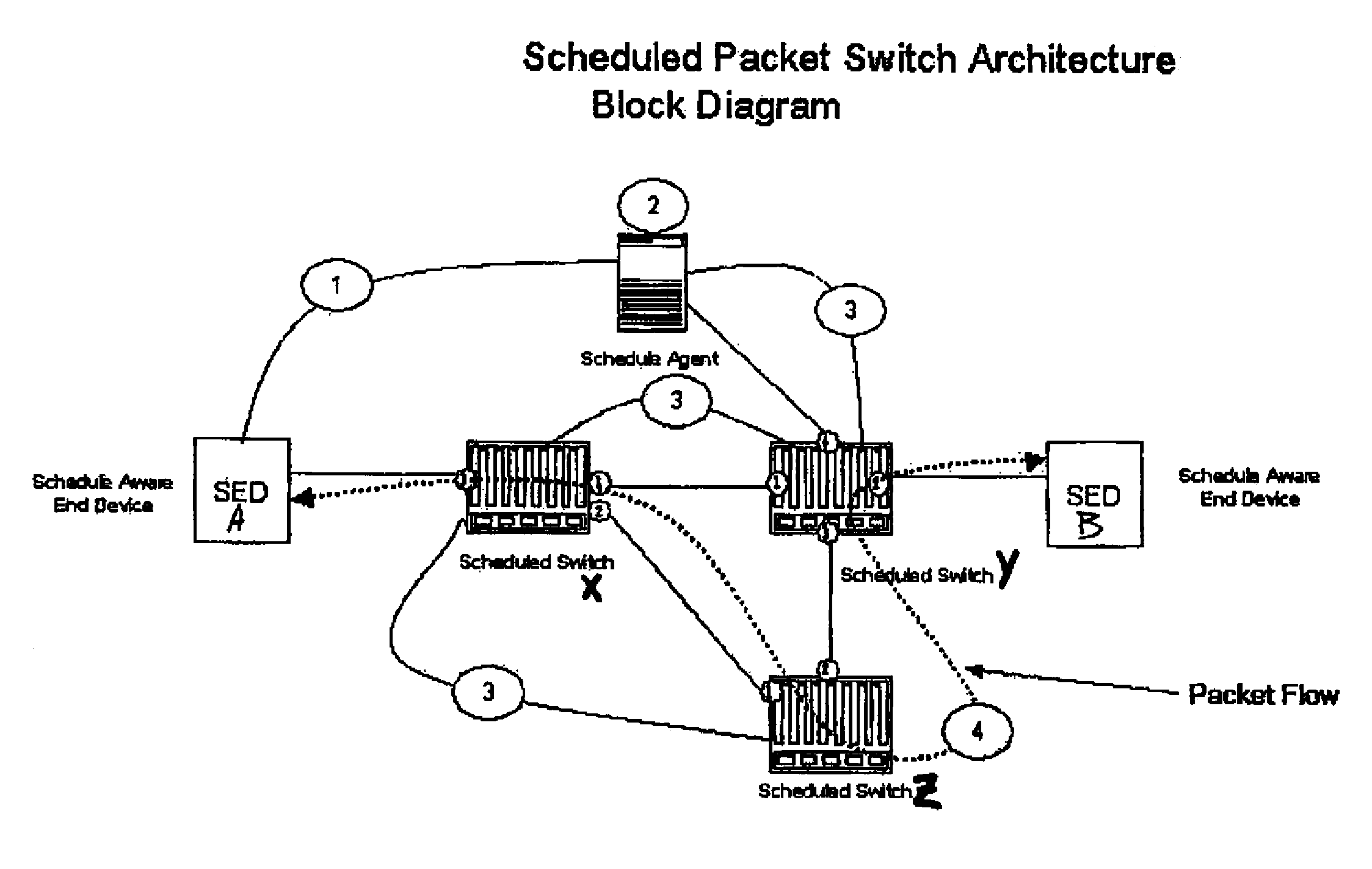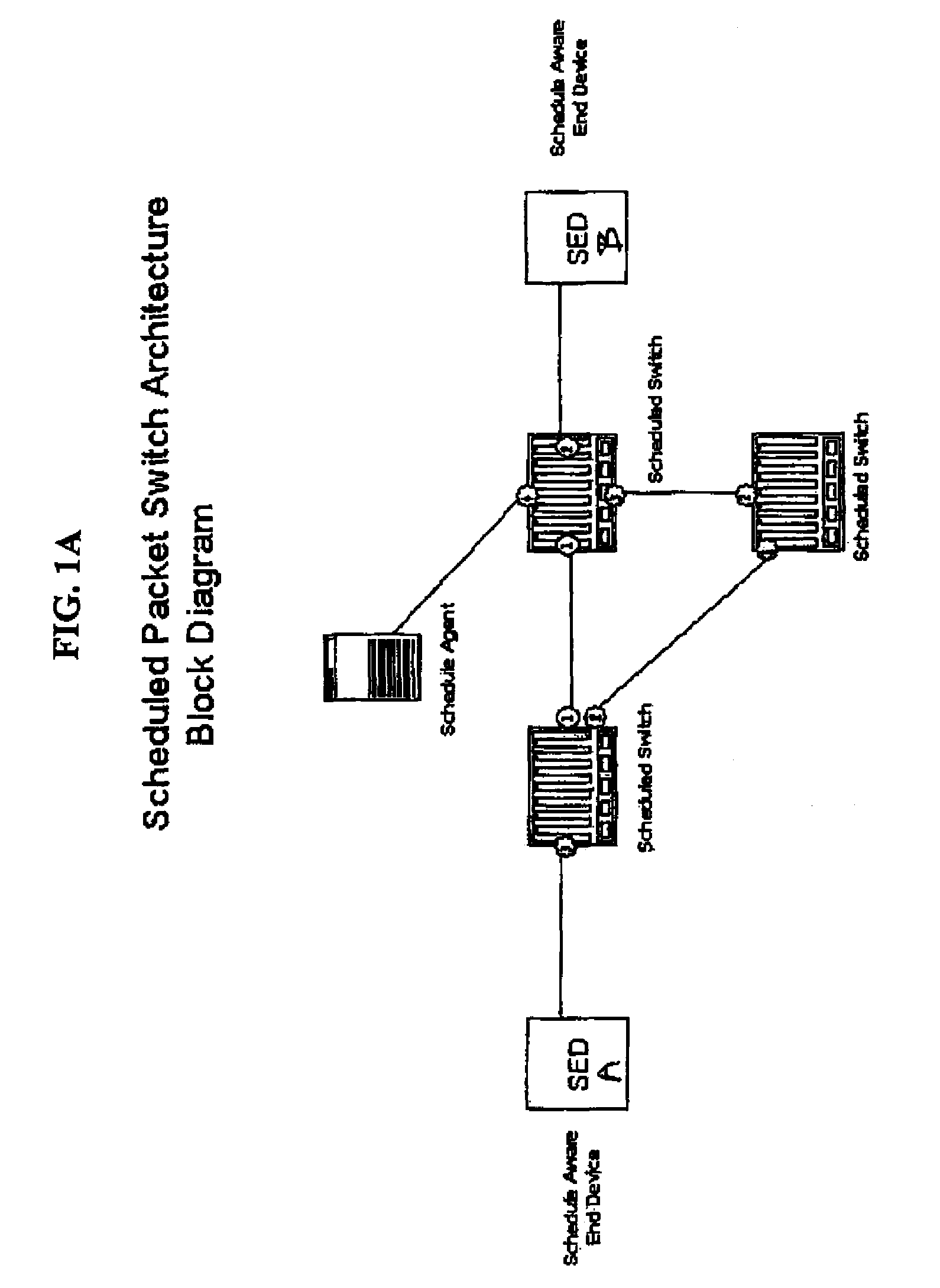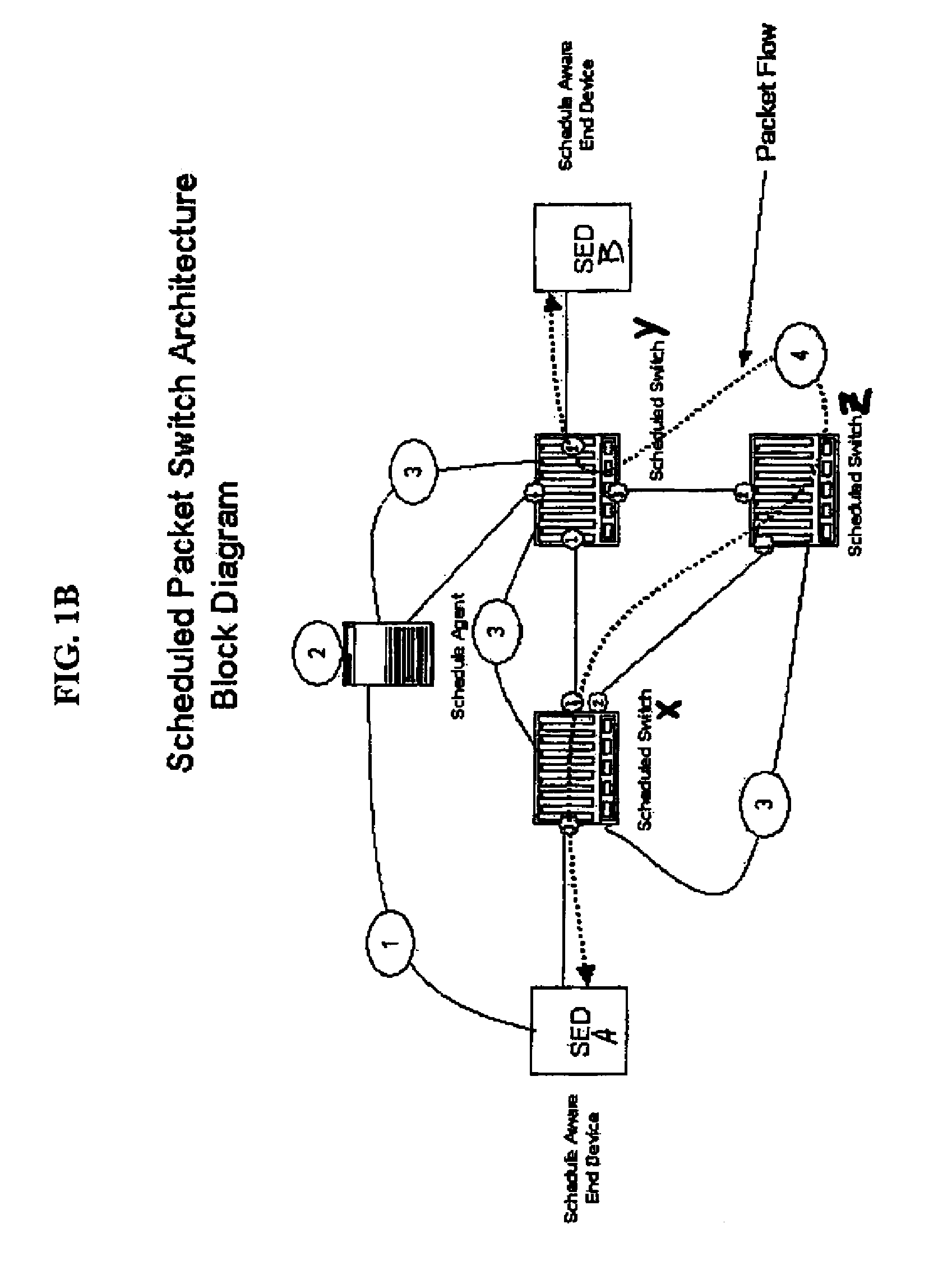Method for achieving high-availability of itineraries in a real-time network scheduled packet routing system
a packet routing and real-time network technology, applied in data switching networks, frequency-division multiplexes, instruments, etc., can solve the problems of inability to meet the hard real-time requirements of most hard real-time applications, inability to deliver unacceptable levels of quality, and limited length and separation between devices that can be attached to the bus
- Summary
- Abstract
- Description
- Claims
- Application Information
AI Technical Summary
Benefits of technology
Problems solved by technology
Method used
Image
Examples
Embodiment Construction
[0058]FIGS. 1A and 1B show the basic architecture of the currently disclosed invention. There are three subsystems required for a Scheduled IP Data Packet Switching System and are shown as follow: A Schedule Aware Endpoint Device (SED or SEP) is any IP compatible network device that is capable of transmitting and receiving data packets to a precisely contrived schedule. The Scheduled Switches (A), (B), and (C), are special IP Packet switches that can maintain a precise schedule for receiving and forwarding packets as determined by the SA. The Scheduled Switches are interconnected through their various links as indicated. A Schedule Agent (SA) is a software application that is hosted by a general-purpose computer. The SA is responsible for pre-configuring the Scheduled switches such that they operate on a precise schedule for particular data packets.
[0059]As shown, the disclosed Scheduled Packet Switching architecture differs from traditional IP routing and switching systems in that ...
PUM
 Login to View More
Login to View More Abstract
Description
Claims
Application Information
 Login to View More
Login to View More - R&D
- Intellectual Property
- Life Sciences
- Materials
- Tech Scout
- Unparalleled Data Quality
- Higher Quality Content
- 60% Fewer Hallucinations
Browse by: Latest US Patents, China's latest patents, Technical Efficacy Thesaurus, Application Domain, Technology Topic, Popular Technical Reports.
© 2025 PatSnap. All rights reserved.Legal|Privacy policy|Modern Slavery Act Transparency Statement|Sitemap|About US| Contact US: help@patsnap.com



